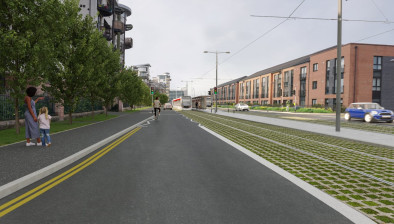Feature: The culture of collaboration driving the trams line to Newhaven
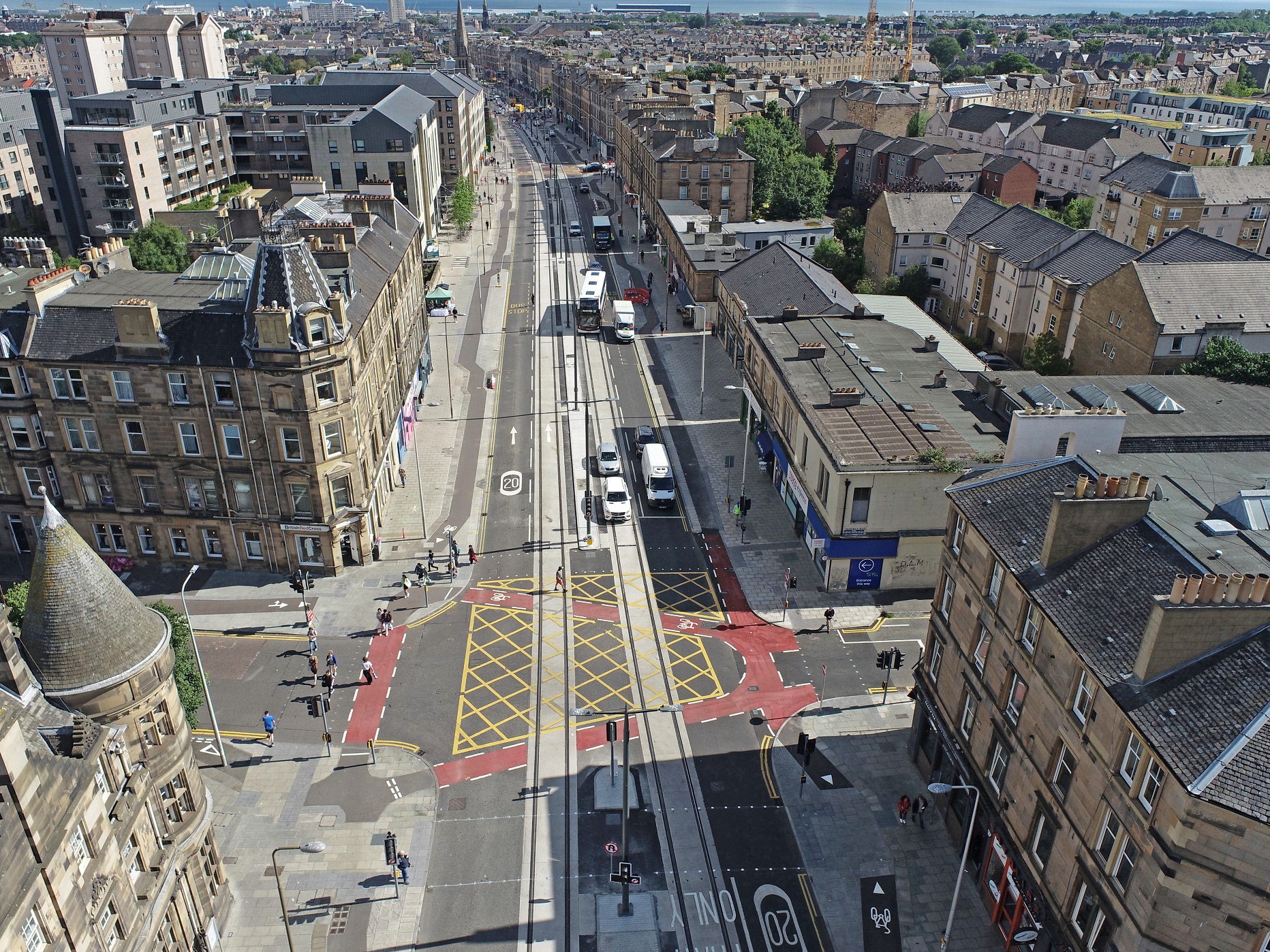
A section of Leith Walk has now been opened
Learning from the mistakes of the past is a common theme for the project team delivering the £207.3 million Edinburgh Trams to Newhaven line.
The first phase of the trams project began operating in May 2014 after six years of disruption and a long-running dispute between the council and contractors. The eventual cost of £776m was more than double the sum initially earmarked for the project. Having now taken longer than it took to build the line itself, the inquiry into the length of time taken to construct this phase is still ongoing, with costs now set to exceed £13m.
In all, eight new stops have been added to the section of line between Newhaven and York Place, where the existing line was curtailed abruptly in 2011 due to the aforementioned delays and budget rises.
Given the ongoing fallout, the case for completing the initial proposal via a second phase had to be a compelling one. But for Hannah Ross, the senior responsible officer (SRO) for the project at the City of Edinburgh Council, the case for the trams is always about why you would build rather than how.
“When we first started looking at Trams to Newhaven, I think it’s fair to say that it took an element of bravery on the part of elected members to look at this project again,” admits Hannah. “In terms of how you build a case, the first line of people to convince is the politicians because they have to have confidence in the delivery. And of course, they’re not often experts in infrastructure delivery. So you’re educating and informing, trying to build some confidence in that the approach you say you’re going to take is going to be effective.”
She told Scottish Construction Now: “I think that the second line is actually the wider public. You never get as much of an opportunity there to go into a level of detail but it’s the wider public having confidence in the project that is necessary to deliver the benefits you wish to realise. If I’m being quite honest with you, I would say that convincing the public is only actually done when they can see that you’re doing it well. It’s not often an opinion piece in a local newspaper.”
As it stands, the second phase of the project, which recently celebrated a milestone for the track-laying element, remains on budget and on schedule for completion by spring 2023 with all major construction anticipated to be completed by the end of the year ahead of the testing and commissioning period.
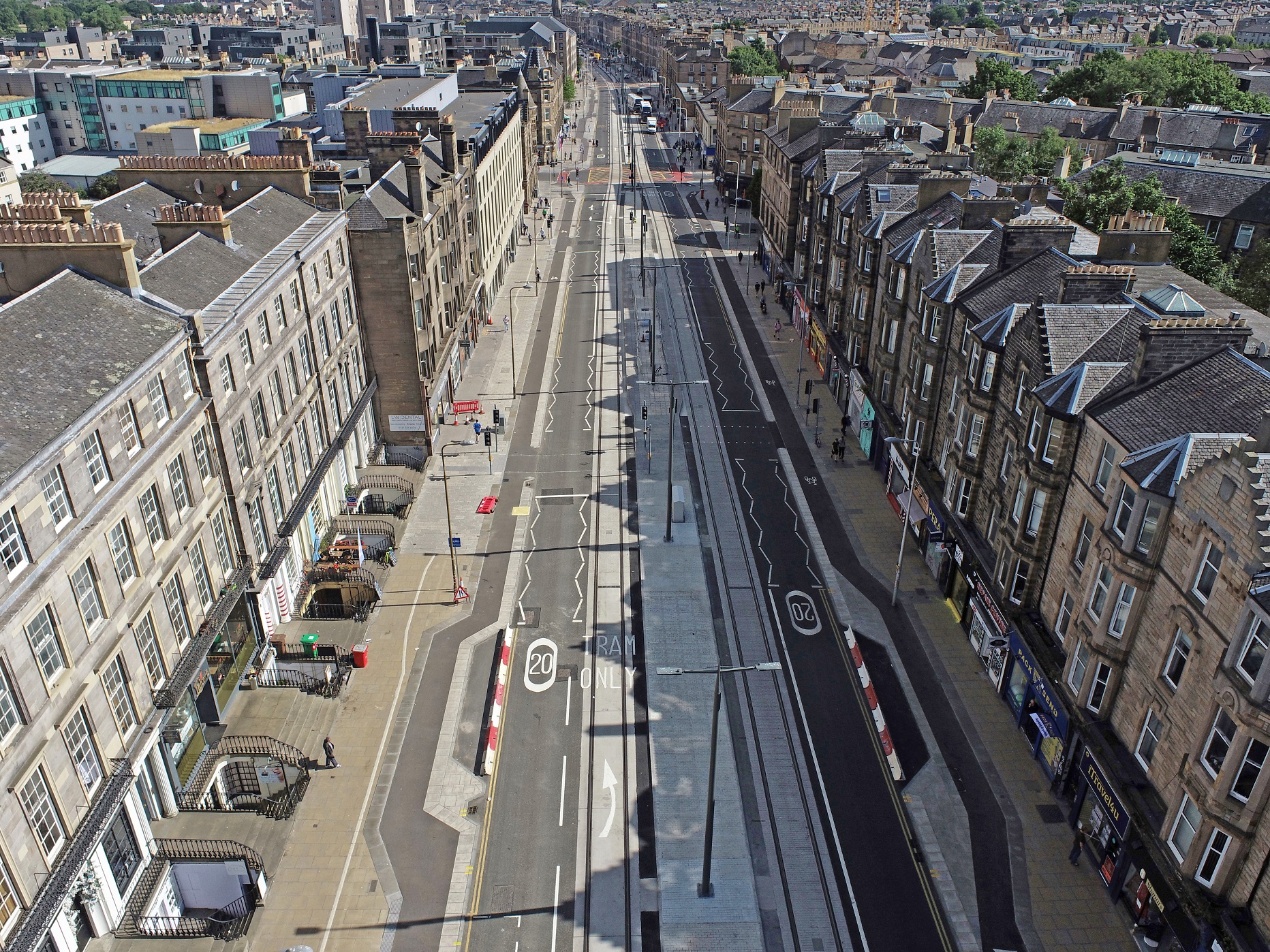
So what has changed?
The presentation of a final business case for the project coincided with oral evidence being provided to the inquiry, led by former judge Lord Hardie. As a result of this, the team tried to build as many of the lessons it recognised as possible into the new project.
Two key areas of improvement were identified: how the project was set up in terms of procurement and contracts and then establishing an ethos of collaboration.
New contractors were brought in to complete the line to Newhaven with new working methods put in place to avoid a repeat of the disharmony which blighted the previous project. In March 2019, the City of Edinburgh Council awarded a swept path contract to Morrison Utility Services Ltd (MUS Ltd), and an infrastructure and systems contract to Sacyr, Farrans, Neopul (SFN), a joint venture of three companies from Spain, Portugal and the UK.
Under the swept path contract, the council procured a specialist contractor, managed directly by the client team, to work ahead of the infrastructure & systems contractor to identify and clear any below-ground obstructions along the tram route.
The infrastructure and systems contract covers the design and construction, systems integration, testing, commissioning and bringing into operational service of the Edinburgh Tram York Place to Newhaven project.
At the time, then finance and resources convener Councillor Alasdair Rankin described the procurement process as being carried out with “enormous thoroughness and diligence”, with every effort made to “mitigate potential risks in terms of build quality and price”. Independent industry expert John Baggs praised it as “the most closely scrutinised process he’s come across in his many years of experience”.
“The good thing about the previous phase is that there were many lessons that we could learn from it and the client has put those lessons into action this time around,” Maria Ortega, project director on Edinburgh Trams York Place to Newhaven, said. “It is actually the success of the existing line that has enabled the new phase to happen. It has encouraged the council to move forward with its plan and continue the line to Newhaven.”
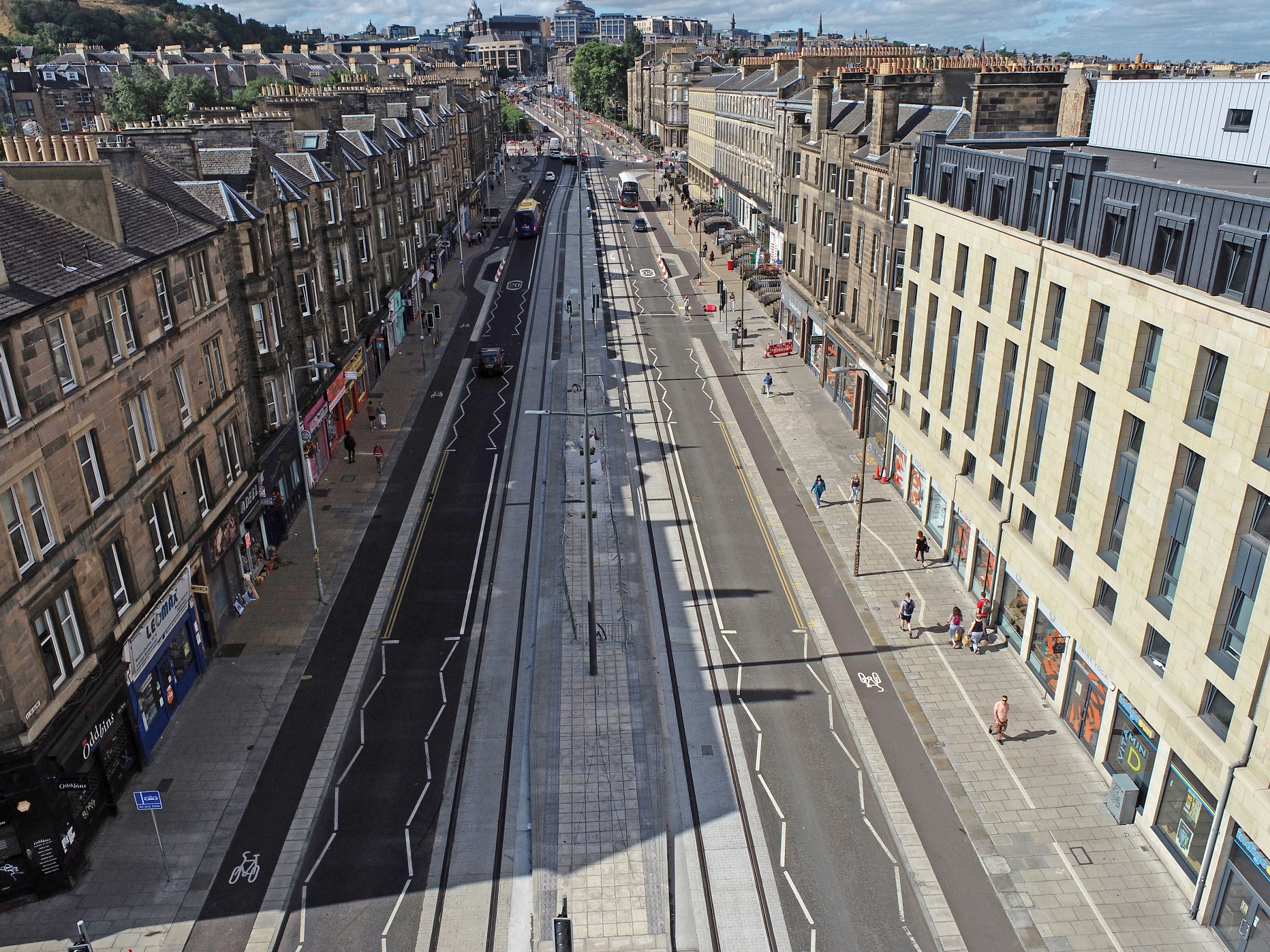
NEC option E contract
The contracts themselves were different too. The swept path contract used during phase two is an NEC option E contract, a cost-reimbursable process which essentially means that the client, in this case the council, holds all risk.
“We felt that there was no way that a properly advised contractor would take on the utility risk because if we don’t know what is going to be discovered, they don’t know either,” explained Hannah Ross. “And, of course, what you’d end up with would be a series of assumptions and then compensation claims made against those assumptions.”
A solicitor by background, Hannah began as a legal lead on the project until 2018 when, looking at what had happened during the previous phase, someone was needed who was accountable within the council structure to lead the project. As SRO for the project, her role is to lead the project on behalf of the city, to be the point of contact with key senior council staff at the council and to promote the desired culture of the project throughout the entire Trams to Newhaven team.
Recognising that the utility risk would ultimately be something that was on the council to pay for, Hannah and her team decided to utilise an NEC option E contract, which allowed the council to closely manage how any utilities discovered underground would be dealt with. This meant sitting in the middle of discussions between MUS Ltd, utility companies, SFN and the project team, to work out if the utility can be diverted in a cost-effective manner or to work out a way to design around it.
Speaking about the flexibility of the NEC contract, Steve Jackson, a project director at Turner & Townsend, said: “If a utility in the ground becomes more onerous, and we have to divert more of it, then the council takes all that risk of the level of staff and effort that’s required to deliver the utility diversions. So, there’s a lot of hands-on management from our side, supporting the council to manage that swept path contractor to drive performance and delivery.”
He added: “If we were coming across issues that needed to be resolved, having the contractors together at the same time means you can sit down collaboratively and be honest about the level of effort required to divert the service or to design around it before coming to a sensible conclusion that is the best outcome for the project. This is very much unlike phase one, where you had the advance works completed way ahead of the time a design team becomes involved. So, it was always part of our strategy to allow us to resolve issues collectively.”
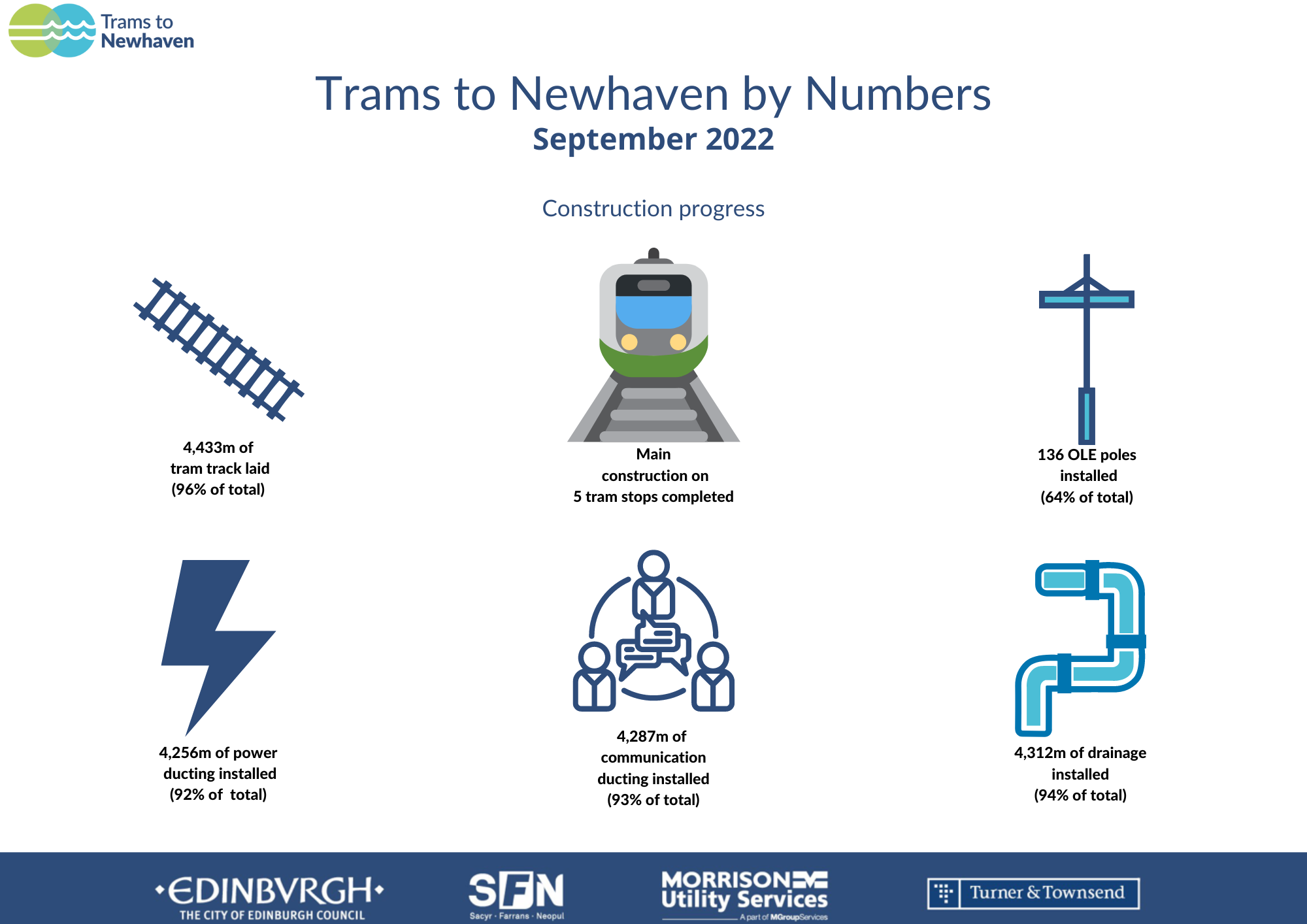
From a social cohesion point of view, the contract has other benefits too.
Maria Ortega, who works for SFN and has an overview of the project summary and contract particulars, said: “Using NEC contracts was one of the lessons learned from the past. It is a user-friendly type of contract. The NEC ethos ensures that collaboration is the thing that ties everybody working on the project together. To have everybody sitting in an open plan office under one roof is one of the key reasons why the project is working so well.”
This effort to build a culture of collaboration was no accident.
Hannah Ross added: “What you can absolutely see from the first phase of trams is that, whatever Lord Hardie comes out with, ultimately the risk of these projects not going well rests with the council and the city in its widest sense. It’s the city that has disruption, it’s the council that has the reputational damage.
“The collaborative way that we work is very much built upon the idea that where there is risk, be that construction risk or commercial risk, for anybody involved then we share it because we recognise that if one member of the group who’s delivering the project is losing, then everybody is losing, and if somebody is winning, then everybody is winning.
“That means when there are problems and issues, we work together to solve them and keep going. Of course, as we entered the construction phase we thought that utilities were going to provide our biggest risk. It still was a pretty big risk, as it was on the first phase, but we didn’t know about Covid, we didn’t know about labour and material shortages, the war in Ukraine or about the wider impacts of Brexit, so as you come through these challenges, that collaborative culture that we’ve had on the project has been enormously helpful. Probably enormously tested at times, but it has been vital.”
While the improved working relationship is evident, Hannah has been keen to avoid complacency during the second phase: “I’ve quite often said to people that we’re equally as capable of making mistakes as anybody else is. I think part of the trick is to look at the first phase of trams and yes, of course, learn from the mistakes that were made, but also not be arrogant at all. That’s where that challenge in the governance around the project really helps us to avoid mistakes in the widest possible sense.”
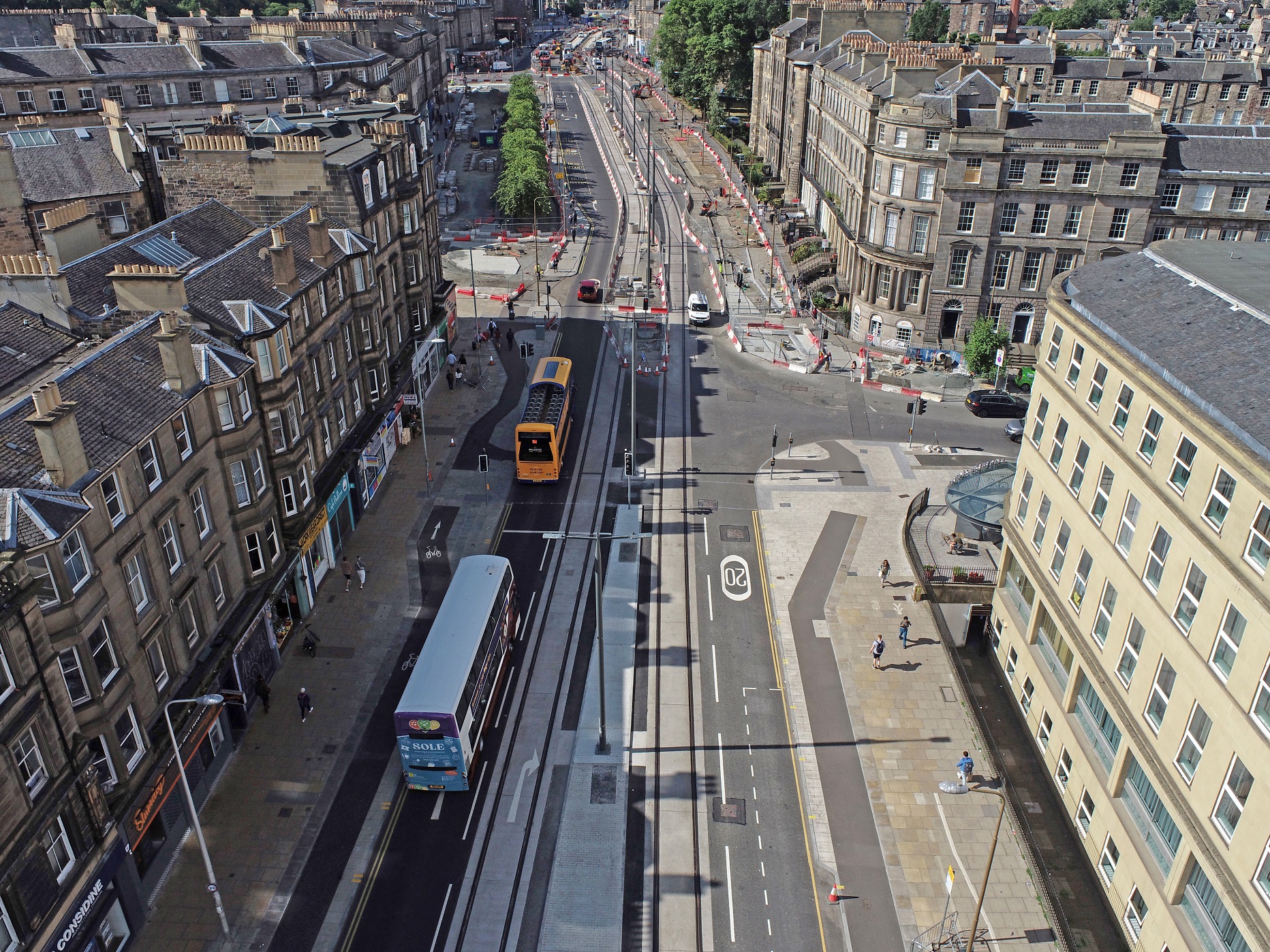
Early contractor involvement
Working on the project from 2011 as part of the Turner & Townsend team deployed to assist with the recovery project on phase one, Steve Jackson has supported the council with the business case and procurement and then to delivery of this part of the line. Since 2014, he has been the lead that works closely with project controls, commercial and digital project management teams.
Speaking about what the 2011 Recovery Project scheme involved, Steve said: “The council drafted us in to support the completion of the project. We were picking up a project on which, it was fair to say, relationships were fraught both internally in the project and with key stakeholders as well. So, we as a business had to mobilise a fairly significant team very quickly as it was in a state where the council wanted to meet revised timelines and keep the project going.
“We had to build relationships and build confidence with those stakeholders, and we had to put in place the equivalent of what we’ve got in this project around a swept path contractor to remove any of the outstanding below-ground risks and get that resolved, to allow us to meet the date that we did in May 2014.”
He added: “Once we got through that initial phase of relationship building and building confidence, despite its challenges, it was delivered like any other major infrastructure project.”
Steve is clearly proud of what has been achieved so far on the second phase of the tram line and he hopes to take many of the positive ways of working, particularly regarding early contractor involvement (ECI), with him to future projects.
He said: “Two things were fed back to me during the ECI period of this contract. One was the importance of building a one-team approach from the outset. Not just the fluffy side of collaboration, but the nuts and bolts of getting everybody in the room because any problem on this project is everybody’s problem. It’s not just the council’s problem, it’s not Turner & Townsend’s problem, it’s not SFN’s problem, it’s a collective problem for all of us, and we need to solve it. And that’s something really important to consider.
“The other thing is that during that early contractor involvement stage, it was important to build relationships but also to define the scope of the swept path contract. We spent a lot of time in that early contractor involvement stage briefing the partners that have been brought on board, both the swept path contractor and SFN, on what we’ve been doing for the last five years. We then allowed the contractors to challenge that a little bit, to tell us how they think we can develop the project and where it can be refined.”
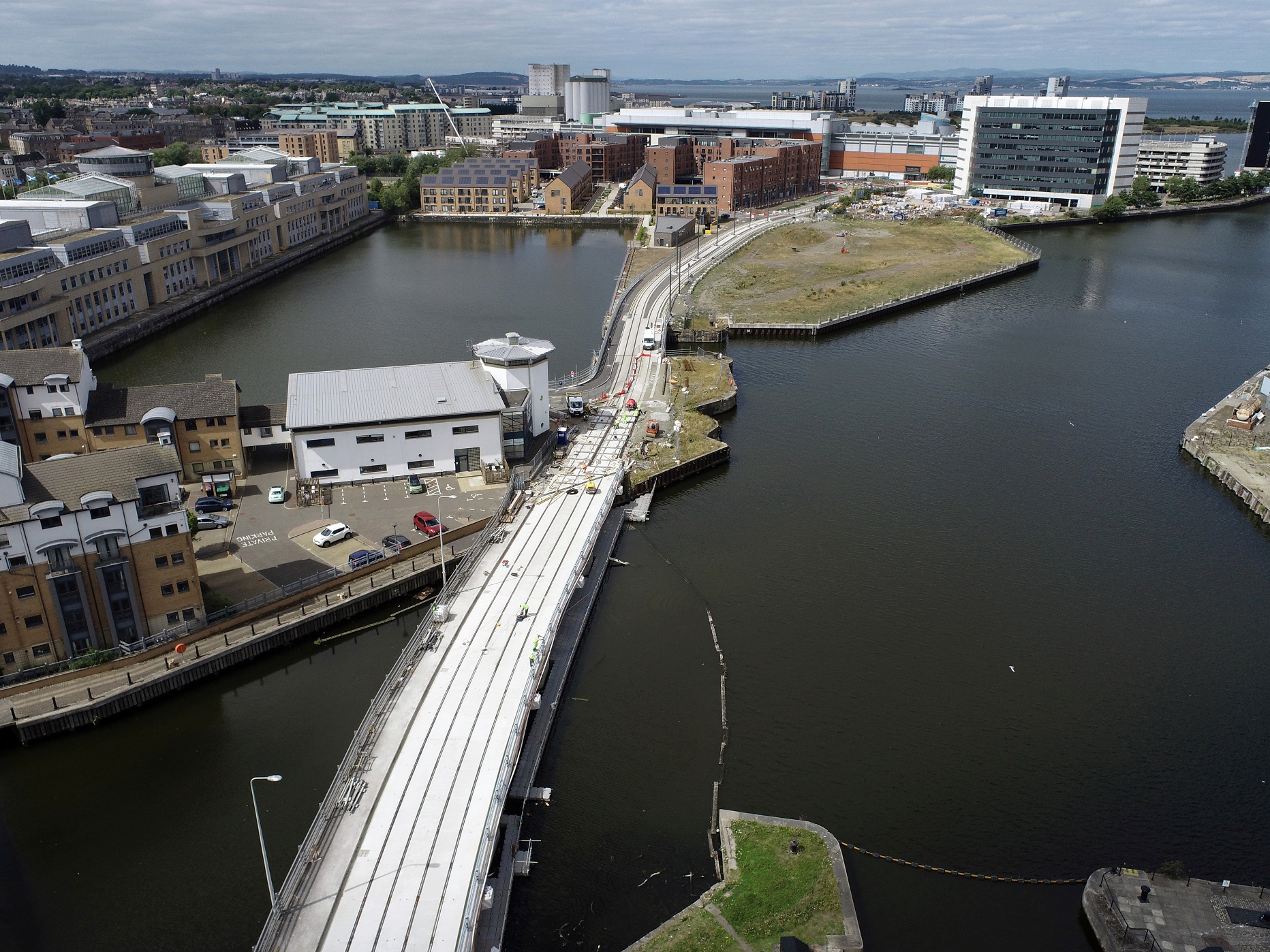
A bridge section at Ocean Drive
Steve added: “When people talk about early contractor involvement, it can be perceived as a period of design but it’s way more than design. It is looking at the design but it’s also looking at constructive ability phasing, building relationships with stakeholders, building relationships internally. A message that I would relay to any other major infrastructure project is to keep that early contractor involvement stage defined as widely as possible.”
The nature of utilities is that once the hard work is finished, it is all below the ground and out of public view. But that won’t stop Steve from walking past certain sections and telling anyone who will listen what was involved.
Asked what sits top of his list of favourite achievements on the project, Steve said: “There are two aspects to this. There’s a placemaking point of view and also things from a technically challenging perspective. On the placemaking side, what we’ve done to Constitution Street between Queen Charlotte Street and Baltic Street, what that will look like when it’s finished, and what it will do for local residents and businesses I think is just brilliant. It’s just completely transformed that area. Looking at it before and looking at it now, with a tram stop at the hub of it, it’s just going to completely change the dynamic of that area so from a placemaking point of view, I’d say that tops the list of what I’m most proud of.
“From a technically challenging point of view, getting across the Foot of the Walk junctions whilst managing traffic flow at the same time is one, and Manderston Street is another example when you look at it on the ground it’s actually a bit of straight track, but under the ground, we uncovered a gas main that we didn’t expect and we had to divert that in such a short period of time. The fact that we managed to get that diverted, get out of the way and get SFN in to get the infrastructure on with minimal impact to the programme, I think was a mean feat for us.”
Renewed interest in Edinburgh’s Waterfront
Not long after the final business case for completing the line to Newhaven was approved did it become apparent that many of the project’s benefits were going to be realised. Developers welcomed the injection of acceleration into their own projects due to the investment and sustainable transport that was to come to the area.
Even by 2020, the completion of the tram network was driving demand for homes in Leith and Newhaven. Housebuilder Cala Homes hailed the rate of sales at its Waterfront Plaza development, with buyers and the developer’s sales team citing the appeal of having the tram network so close by, with the line adjacent to the northern edge of the site, located opposite Ocean Terminal.
Lesley Coyle, a senior sales consultant with Cala Homes (East), said at the time: “Having the tram close by is a big deal for buyers here and it is referenced regularly during early visits.
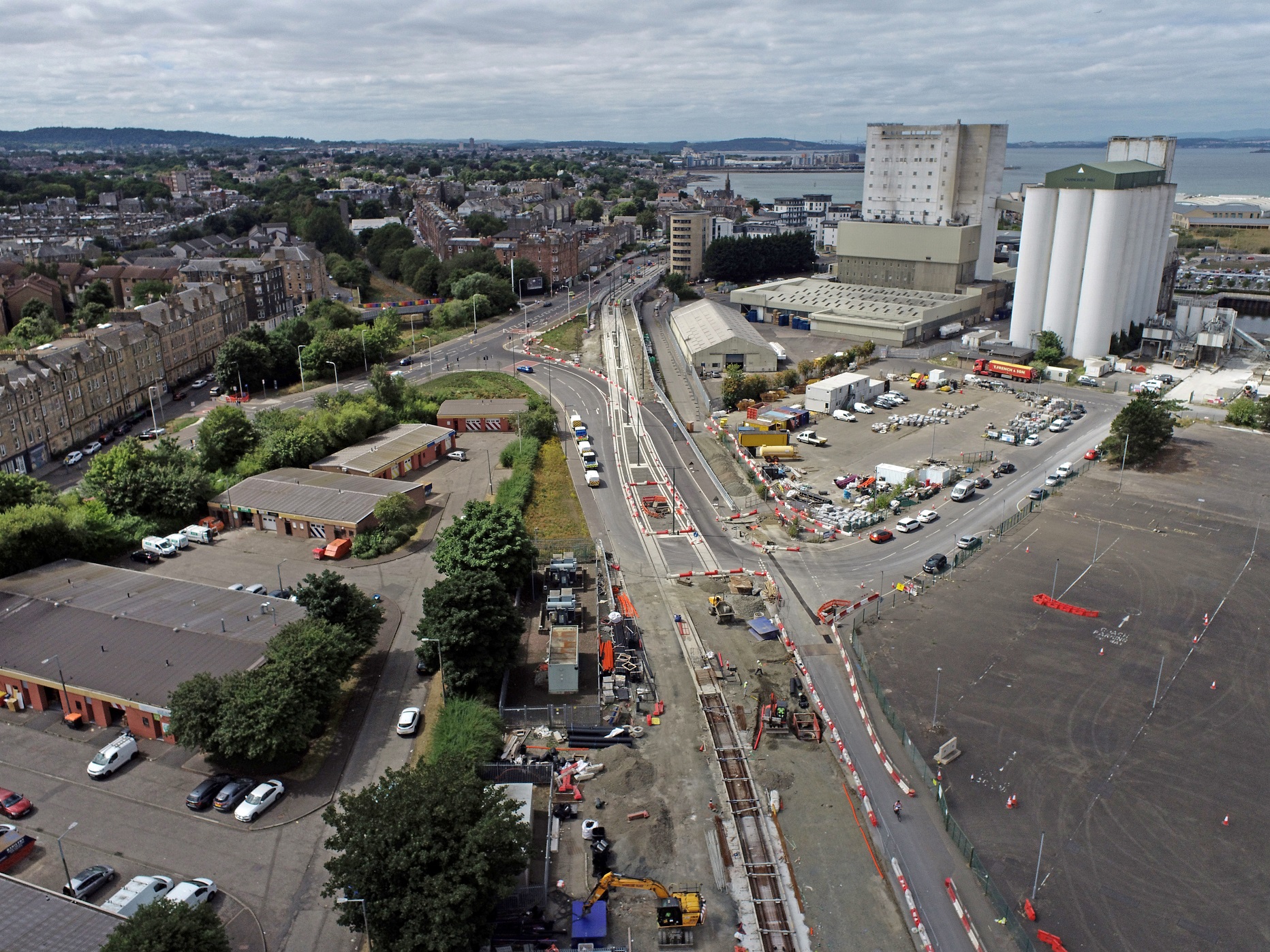
The junction of Melrose Drive and Lindsay Road
“I’ve no doubt it is playing a role in our strong sales here. While the pandemic has impacted our behaviours greatly, we have buyers who work near the airport, or need to use the airport regularly.
“To many, they feel they can now realistically consider Leith, whereas before they’d have stuck closer to their work.
“Many more are simply excited at the evolution of this part of town, something symbolised by the tram completion – or having another option that allows them to go somewhere without the car.”
The Ambassador Group had also taken ownership of Ocean Terminal and unveiled a transformational redevelopment that will open up the property to the waterfront.
Asked whether the Trams to Newhaven project had influenced the Ambassador Group’s decision to invest, Chris Richardson, managing director of Ambassador Investments, said that the appeal of Leith “goes far beyond the trams” but added: “Our investment in Ocean Terminal reflects the potential we see in the Leith as a whole and was planned knowing the completion of the tram line had been announced. The retail environment has changed driving the need to reimagine the centre and there is a huge demand for new housing in the area which has its own unique, dynamic community.
“The vision is to transform the waterfront, bringing renewed vitality to the area with new homes, leisure and retail facilities in what would be a fitting destination for the new tramline. When it is complete the tramline will provide sustainable transport links to and from the city centre that add to the economic revival of the area.”
Hannah Ross said: “I would say that this project really delivers on the benefits that were considered in the first phase of the tram. If you look at the Leith docks area, that’s a really significant area of development on a brownfield site. The council is very keen to see that we utilise those brownfield ex-industrial areas, rather than building on the greenbelt.
“The line then connects through Leith Walk, one of the most densely populated places in Europe with historically low levels of car ownership, until it goes York Place and joins the existing line to take people to employment and leisure opportunities elsewhere in the city. The city centre is already well-established as an employment and leisure centre but there’s also more development happening in West Edinburgh and the line continues on to the airport to truly deliver a connection for local people to access jobs and leisure and all the other reasons people decide to travel in a city. All these good reasons really provided the impetus for people to push forward.”
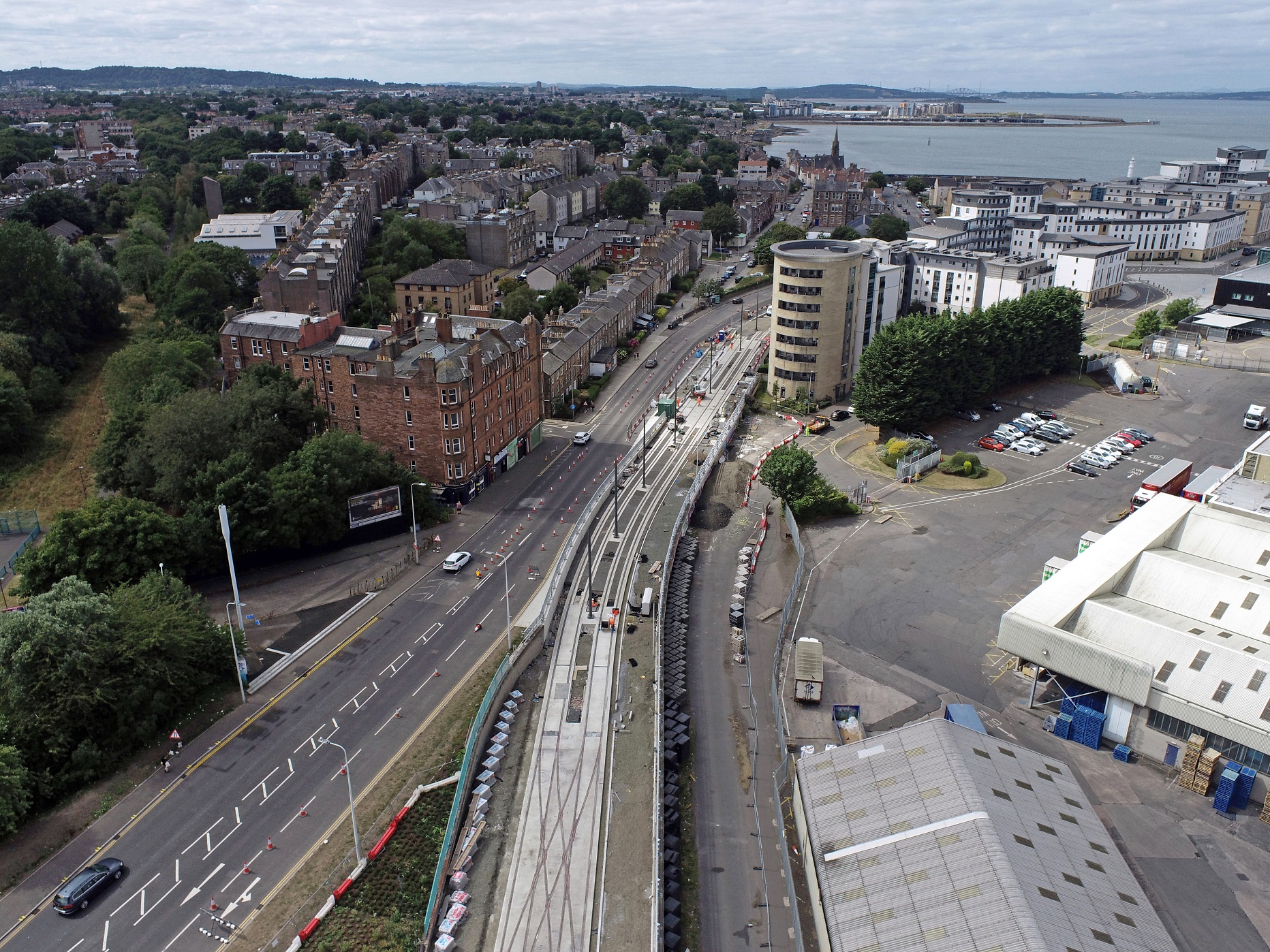
The end of the line at Melrose Drive
Building confidence in major projects
But for Hannah, the biggest takeaway from the second phase is knowing that the city of Edinburgh can deliver major infrastructure projects and that other cities should be spurred on as a result.
“I think what we are delivering, and we haven’t finished yet, is a level of confidence in the fact that the city can deliver projects,” she said. “Now, that’s really important because if you look at a lot of the challenges that the city is going to be facing over the next, however many years, you need politicians to feel confident that project delivery isn’t going to equal difficult political times for them.
“If we can show them that projects can be delivered sensibly, robustly, and with a degree of awareness of the wider world that we’re living in, I think that builds confidence to allow them to then say, we want to do something else that’s needed, but it might be challenging, is likely to be disruptive and is likely to be difficult. And I think that’s the kind of decision that we want to empower our political leaders to want to make at every level.
“There are things in the council’s own city mobility plan and if you look across to Glasgow, they’re considering a tram line across there, so there are big transport projects being mooted that require this kind of big intervention. It’s almost like we don’t exist in a place where there’s a neutral outcome to this. If this goes poorly, these projects will not happen because there’s no politician going to be confident enough to go ahead with them. If we do well, then actually it can really enable a lot of development. I think that’s probably the key thing that this project is delivering.”
With the tram track now running continuously from York Place to Newhaven, 100% of utility diversions completed and major civil works finished on most of the new tram stops, the team can be forgiven for looking ahead to the finish line. But Steve Jackson was keen to stress that the job is not done.
“I think one of our biggest risks was always what we’re going to find under the ground, whether it be utilities, archaeology or ground conditions,” he said.
“But the challenges aren’t over yet. We still need to face the industry challenges around inflation, labour supply and material supply.
“We’ve got different challenges coming up in the next six months including the installation of the overhead line equipment, a lot of night-time work and a lot of working closely with the operator. We’ve then got system integration, and testing and commissioning so we’ve got different risks and different challenges to deal with. It is something the whole team will overcome though with the collaboration we have consistently had since day one.”





















